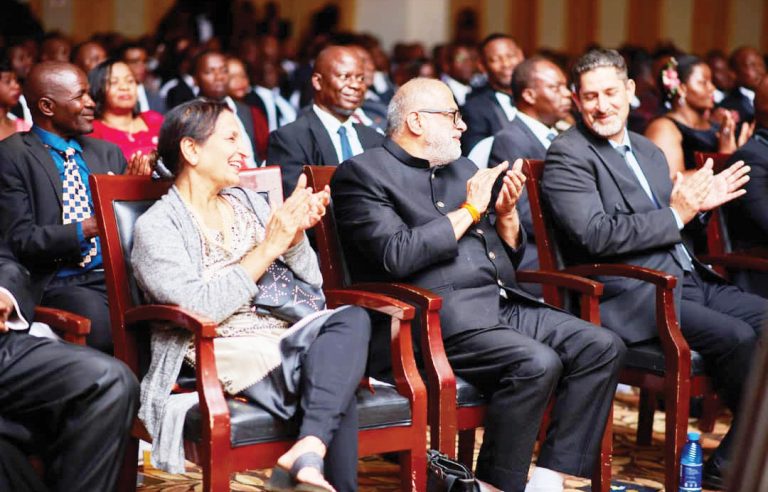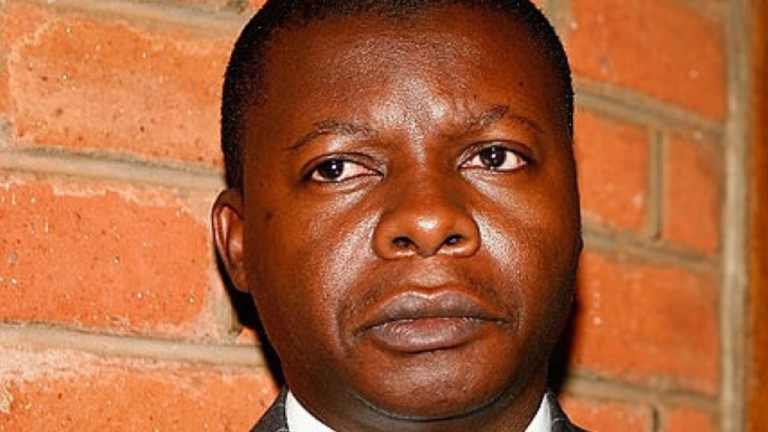BY PIJ REPORTER
Lilongwe-based Rwandese businesswoman Gentille Giramata, the prime suspect in the murder of her ex-husband Noel Habimana, was arrested in Zambia on Wednesday as she attempted to leave for the United States. The arrest followed the High Court in Lilongwe, revoking her bail. Habimana’s family seeks justice.
Gentille Giramata, a Lilongwe-based Rwandese businesswoman, was thrust into the spotlight following her arrest at Kenneth Kaunda International Airport in Zambia.
The arrest took place as she attempted to board a flight to the United States of America. Gentille is no ordinary traveller; she is the main suspect in a murder case gripping Malawi and Rwanda. This case is a complex web of allegations, investigations, and deep family strife.
Gentille, a woman with a complicated past, had been on bail under suspicion of her involvement in the murder of her ex-husband, Noel Habimana. The 36-year-old businessman died mysteriously on October 17, 2022, in what was initially reported as a road accident near the Malawi Institute of Management (MIM) in Kanengo, Lilongwe.
However, this account of events has since been challenged and transformed into a heart-wrenching saga of family disputes, suspicions, and courtroom drama.
The story of Gentille Giramata and Noel Habimana is not a straightforward one. It is a narrative laden with elements of conspiracy, claims of domestic violence, property disputes, and suspicions of a criminal plot. At its heart lies the unanswered question: Did Gentille play a role in her ex-husband’s death, or is she an innocent party trapped in a convoluted narrative?
Emiles was buried at Area 18 Cemetery in Lilongwe.
On Tuesday, the High Court in Lilongwe took a significant step in this legal drama. It revoked Gentille’s bail, which sent shockwaves through the legal and public spheres. This dramatic turn of events occurred after the findings of an autopsy showed that Habimana’s death was caused by poisoning, not a road accident, as initially reported.
High Court Judge Bruno Kalemba, presiding over the case, issued the revocation order under section 124 of the Criminal Procedure and Evidence Code. The decision further complicates an intricate storyline, raising questions about how Habimana died and who might be responsible for his untimely demise.
Habimana’s family is at the centre of this tragic narrative. They have been vocal in their demand for justice, expressing concerns that some law enforcement personnel may have aided Gentille in her escape to Zambia. The family has questioned how someone whose passport was held by the Police as part of her bail conditions could manage to travel abroad and whose passport she was using.
When the Platform for Investigative Journalism (PIJ) initially reported the case in November, it emerged that two separate autopsy reports gave conflicting results on the cause of death. This revelation added another layer of complexity to an already perplexing story.
The family accused Gentille of arranging the autopsy without their knowledge, although the Police claimed they had authorised it to determine the cause of death. The contradictory autopsy results only fuelled the family’s suspicions, raising concerns about the integrity of the investigation and the circumstances of Habimana’s death.
The family’s doubts partly emerged because of the accident’s nature and the secrecy surrounding the embalming and burial process. They pointed out discrepancies in the reported accident time, the choice of hospital, and other aspects of the case. These discrepancies, they argue, suggest that there might be more to Habimana’s death than initially met the eye.
As the family’s frustration grew, they decided to halt the burial process and request a second autopsy. Their concerns were not unfounded, as they believed the initial autopsy might have overlooked critical details related to the cause of death.
“We suspected foul play in this whole issue, and that is when we took up the issue with Kanengo Police,” explained Claude Rukondo, Habimana’s younger brother. He detailed several suspicious things to the family, including the timeline of events on the fateful day.
Emile was a wealthy and successful businessman in Lilongwe
Rukondo recounted that on the day of the incident, Habimana had called Rafiq, his driver, at 12:24 a.m., instructing him to come and pick him up and head back to Lilongwe. “But after that phone call, my brother’s phone went off,” Rukondo said. Approximately two hours later, at 2:42 a.m., Rafiq called Gentille, informing her they had been in an accident.
The family was troubled by the fact that Gentille had the body embalmed and prepared for burial before they had been informed of the accident. This sequence of events raised suspicions and prompted the family to question the circumstances of the accident and the subsequent actions taken.
The second autopsy at Kanengo Central Hospital painted a different picture of Habimana’s death. It concluded that he died due to commotio cordis, massive hemopericardium, and haemothorax, effectively ruling out the possibility of a road accident.
Commotio cordis is a phenomenon in which a sudden blunt impact to the chest causes sudden death without cardiac damage. Hemopericardium often results from acute blunt or penetrating trauma from direct pericardial damage, myocardial contusion, or proximal aortic injury. Haemothorax is a blood collection in the space between the chest wall and the lung.
The second autopsy’s findings pointed toward a different cause of death: “The cause of death was identified as a pericardial tamponade due to heart muscle and inferior vena cava rupture,” the report concluded. In simple terms, this means that heavy pressure was exerted on the victim’s chest, leading to the rupture of one of the arteries connected to the heart. This assessment contradicted the initial assertion of a road traffic accident.
The family felt vindicated by the second autopsy results, which appeared to substantiate their suspicions. The revelations further raised questions about the initial autopsy’s accuracy and the circumstances that had led to Habimana’s tragic death.
The minibus in which Emile and Rafiq were travelling in at the site of the accident
As the case unravelled, another layer of complexity emerged: the rocky marriage and messy divorce between Gentille and Habimana. According to Gentille’s testimony, she had been married to Habimana for ten years before they filed for divorce in November of the previous year. She claimed that during those ten years, their marriage had been rocked by domestic violence, major differences with Habimana’s family, and allegations of infidelity, as Habimana had fathered a child out of wedlock.
Gentille maintained that she had no motive to kill the father of her children, as the couple had reached an amicable property agreement endorsed by both their lawyers and the High Court. This agreement involved the division of their extensive property portfolio, a contentious issue at the heart of their separation.
At the time of Habimana’s death, Gentille was in the process of transferring his share of the property to her name. The family saw this as a possible motive for her involvement in the events surrounding his death.







